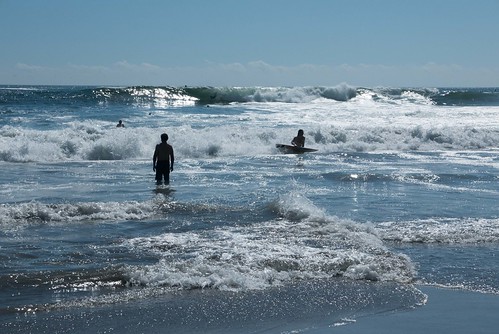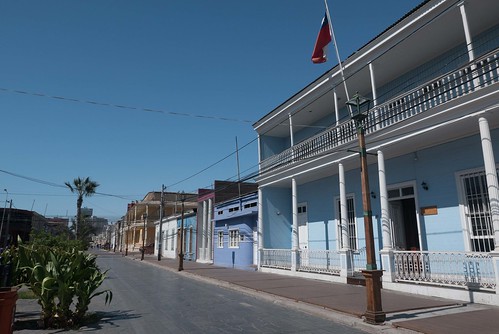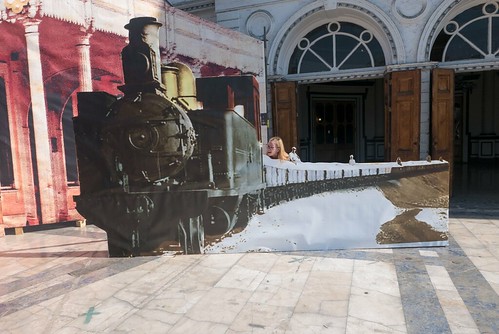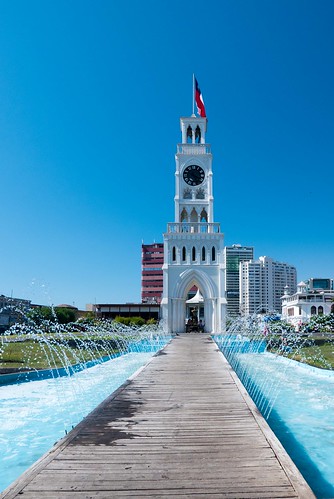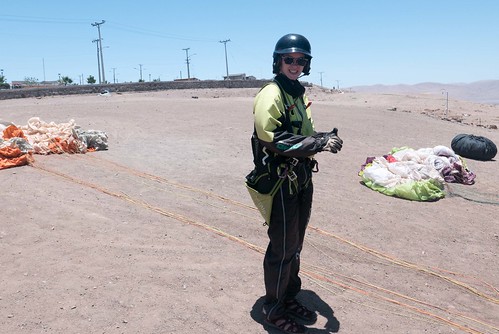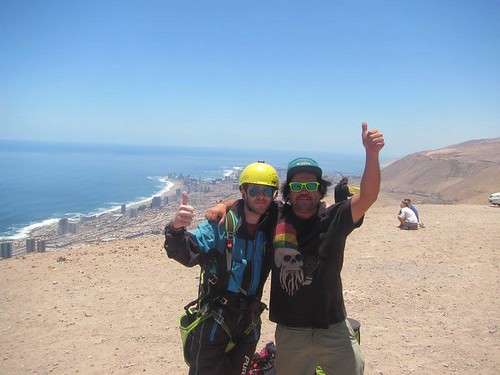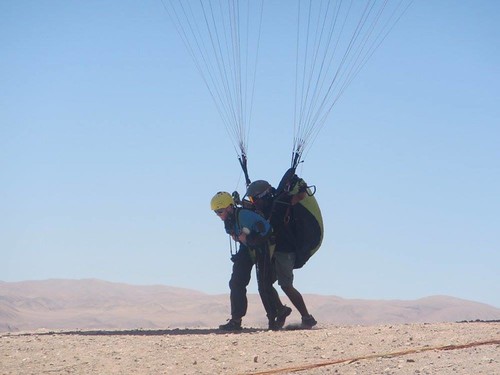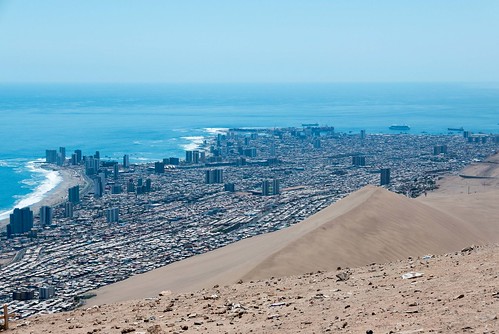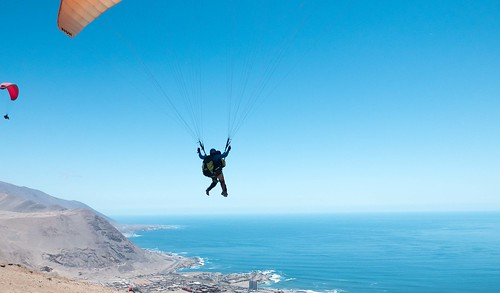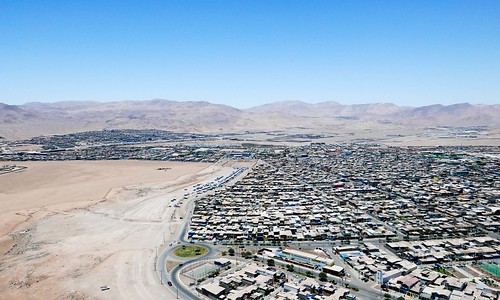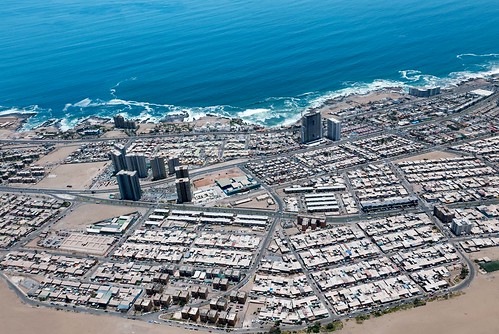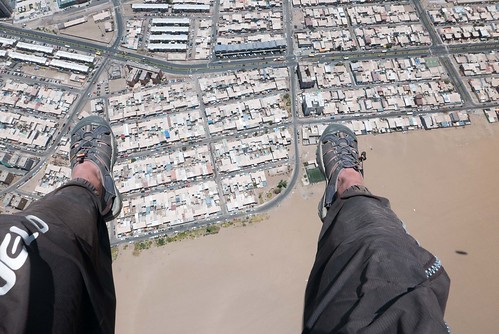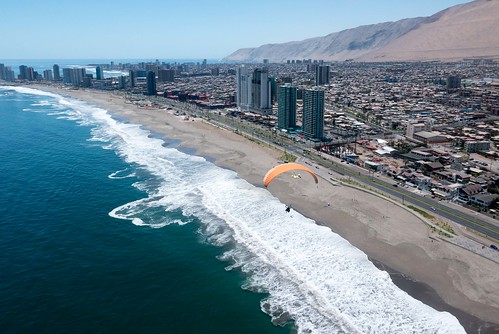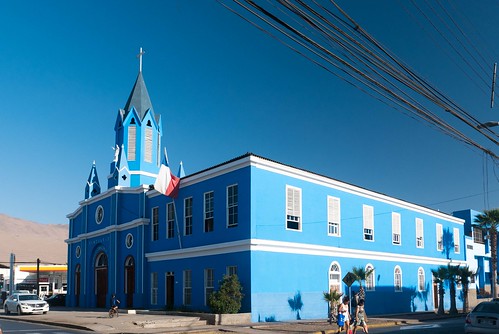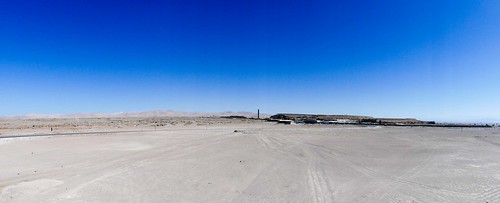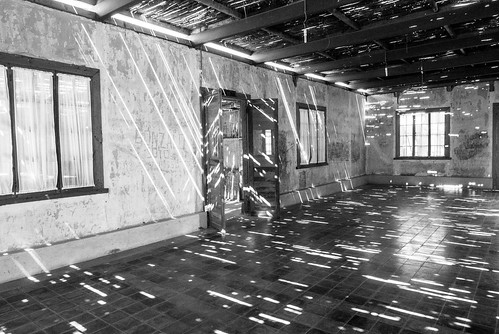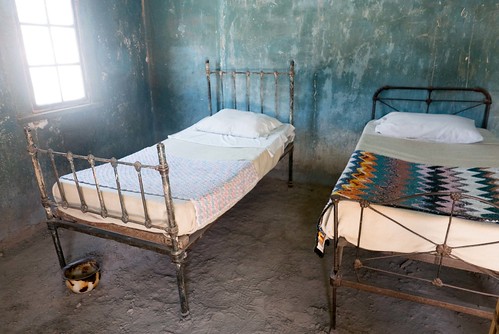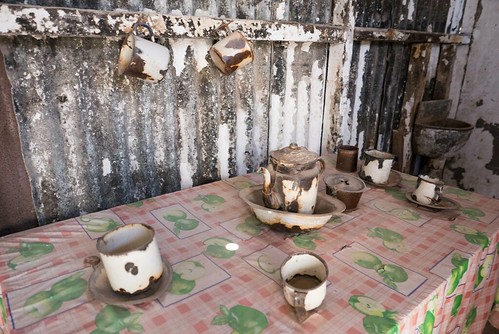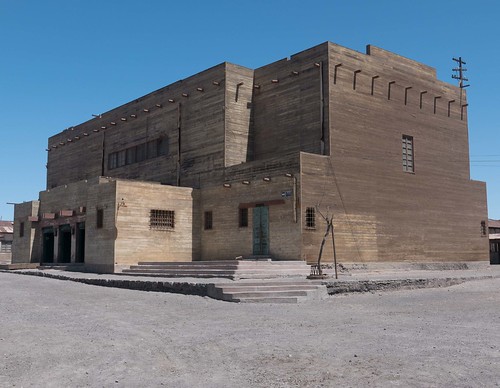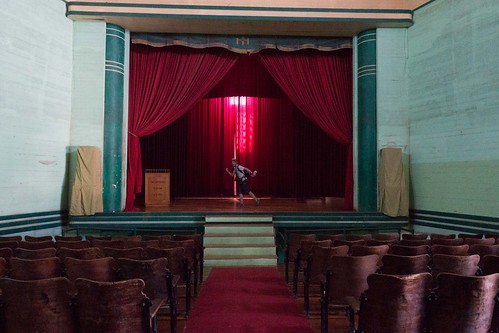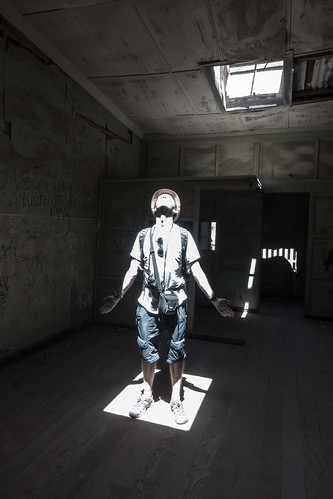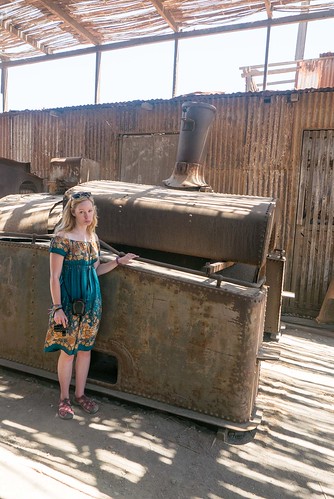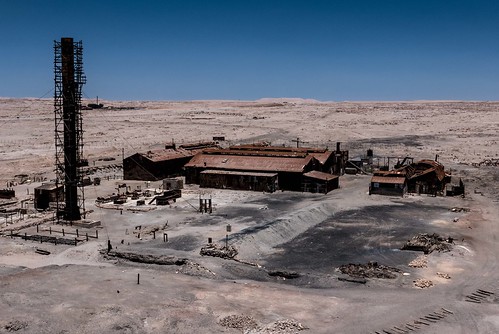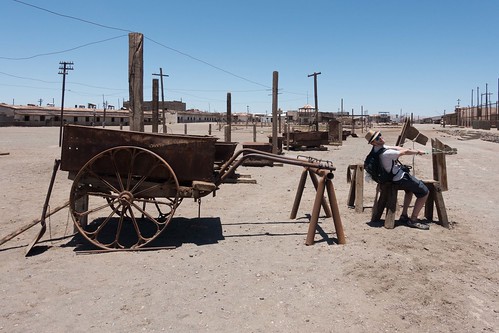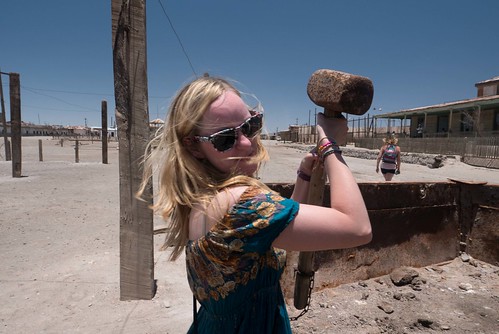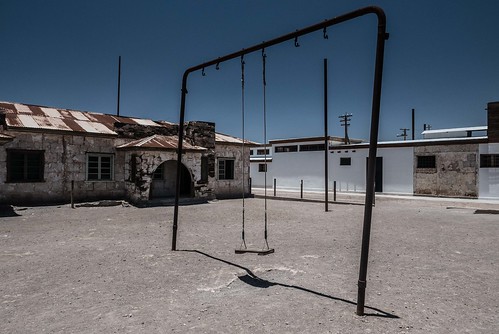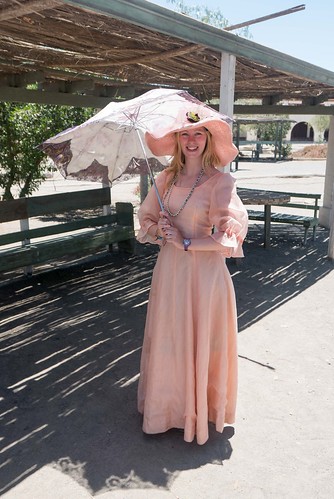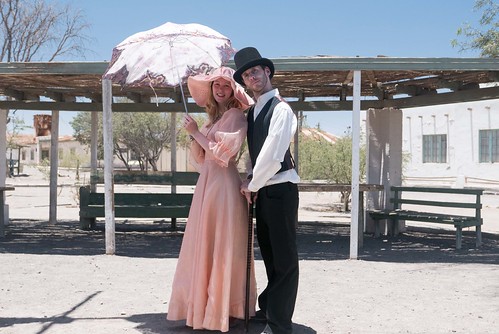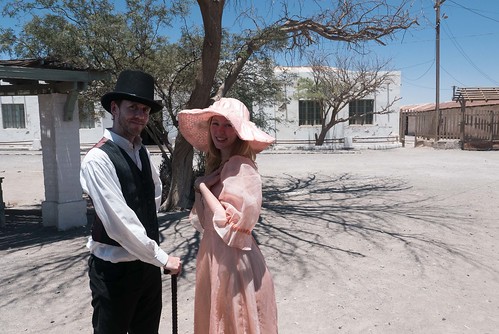We almost didn't make the 8:30am bus to La Serena. Carlos had told us to leave the key in our room when we left, which seemed sensible enough...until we remembered that we needed the second key on the keyring to open the front gate and get out. Unfortunately, we only realised this five seconds after the room door clicked shut, locking our key and means of leaving the property firmly out of reach. There was no alternative means of buzzing the gate open, no-one was in the property to help us, and Alejando was not responding to our desperate messages for help. There was a gap between the gate and the archway which we could feasibly have climbed over and thrown our bags through, and I'd pulled a stack of patio chairs down to the gate in preparation for doing just that, when I had a brainwave. Fishing out a card from my wallet, I tried sliding it down the lock....and was rewarded with the gate swinging open. Cue huge sighs of relief from us both, and a feeling that I missed out on a career in MI5; a walk to the bus stop down the road took us to the terminal and from there to La Serena in the early evening.
The city is clean, a little sleepy, and an ideal place to wind down on the way up north. Our hostel was Cosmo Elqui, which had fantastic dorms with comfortable beds, and brands new sheets, pillows and duvets. It felt like luxury. We were starving and it was gone 9pm so we took a recommendation from Felipe on front desk for Thai food and set off to find the restaurant, only to discover it was closed at 8 each day. A cursory look around town didn't yield much else that we fancied, so we went back to the hostel for some Tripadvisor advice and ended up eating a massive ceviche and salad at Jack Fish at 10pm. Beer pong followed at the hostel at 11 where all sorts of strange rules abounded (my excuse for us losing), before a group of Chileans, Australians and us all headed to The Living Loft. Far from being the amazing club Felipe claimed, it was instead three floors of the same crap music, with the top floor having bonus smokers. I ended up having the same cocktail three times after enthusiastic Chilean toasting managed to smash my glass twice (in fairness, they insisted on buying me a replacement) while the long day proved all a bit much for Gilly who went and had a nap in the corner. A taxi back at 4am meant that we were in no state for breakfast the following day.

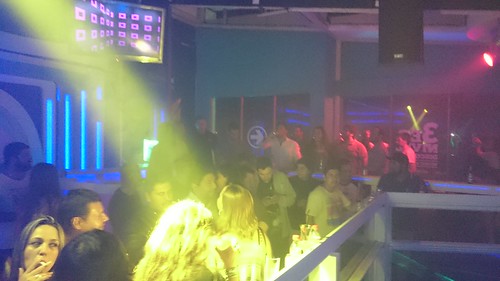
We struggled out of bed at around midday and finally got to
Quai Thai for a decent lunch, the
menu del día being particularly good value. We visited the local archaeology
museum which held mummified remains, shrunken heads, and one of the only Easter Island heads to make it to the mainland. This head toured the world in various museums, until it got a broken neck somewhere in Europe and Chile quickly demanded its return for repair; the head's tour ended somewhat abruptly after that. It was a lovely day so we took our books down to the Japanese garden to read and had a stroll around. It wasn't a patch on Santiago's, but we did see a duck with a 'fro which pretty much made them even.
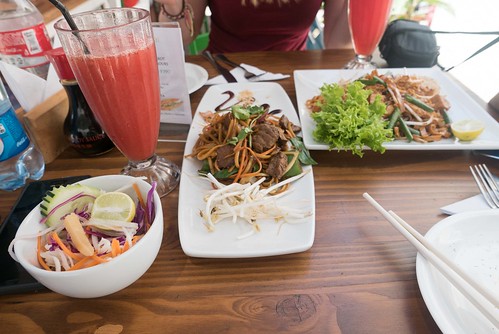


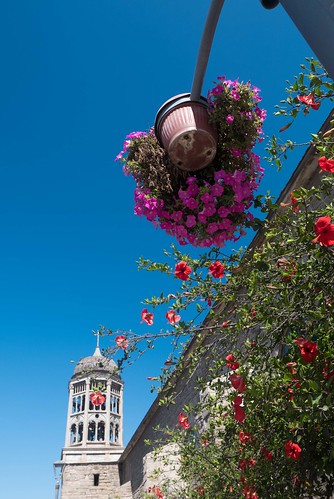

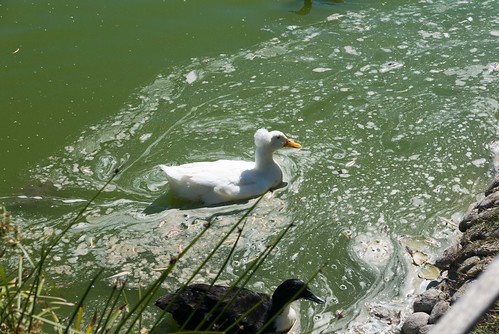

Back at the hostel, we met an English couple (Sara and Richard) who had been out to Isla Damas, where there is a reserve of Humboldt penguins and potentially the chance to see dolphins and whales on the way. They'd seen neither, and we'd originally been put off by the cost of almost fifty quid per person for a tour, until Sara and Richard told us we could get there on a bus ourselves and do the same trip for half the price. Though we'd seen penguins already on this trip, the chance to possibly see dolphins sold me so we were up at 7 the next morning to catch the 8:30 bus to Punto de Choros. On the bus were Chris, a sci-fi author now working as a Hollywood writer for HBO, and a German student named Sarah who was taking some time out before doing a masters in international business.
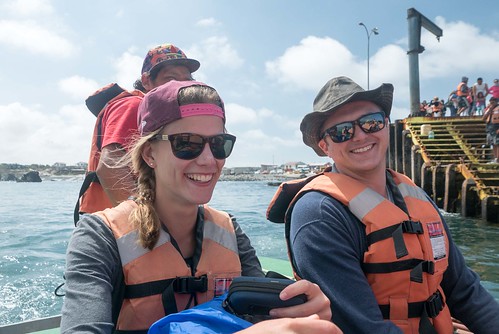
We were dropped off at the mini dock where we bought a boat ticket and a separate ticket to get off and explore the island, before grabbing life jackets and jumping on the next available boat. It has to be said, if I'd paid fifty quid for this tour I'd have felt ripped off. We passed by an island that had Humboldt penguins we could barely see on the shore some 30m away, not moving. They could have been cardboard cutouts and we'd have been none the wiser. Apparently, if you get too close to them, there's the potential that they could have a heart attack and keel over from the stress. We saw a few seals, and Isla Damas itself was pretty lifeless. However, on the way to the second island we spotted some boats in the distance which were congregating and as we approached we saw things leaping out of the sea in front of them. Dolphins! Not just a few, but a huge pod of bottlenose dolphins, the largest I've seen. They were following our boat and were almost close enough to touch. It was tremendous and absolutely made the trip worthwhile, though of course there's no guarantee you'll see them if you go. I'd definitely recommend doing it yourself rather than through a tour. If you're feeling flush, you could also stay nearby in big dome tents, although you're basically in the middle of nowhere with not a fat lot else to see other than a huge penguin (which seemed perfectly happy for me to hug it).
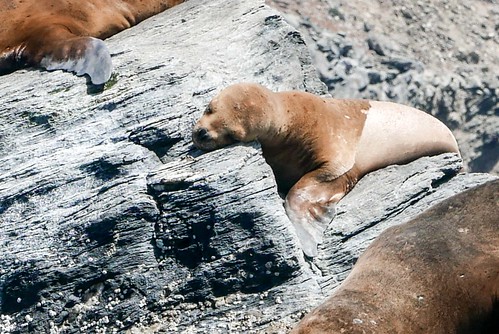
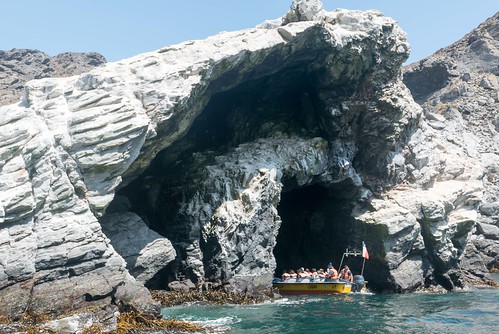
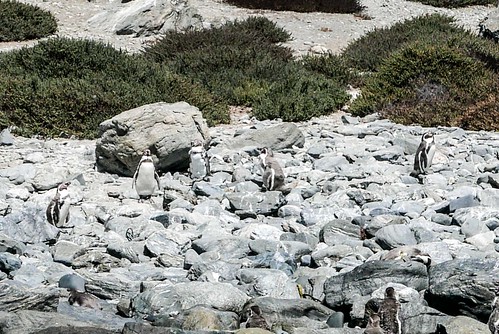
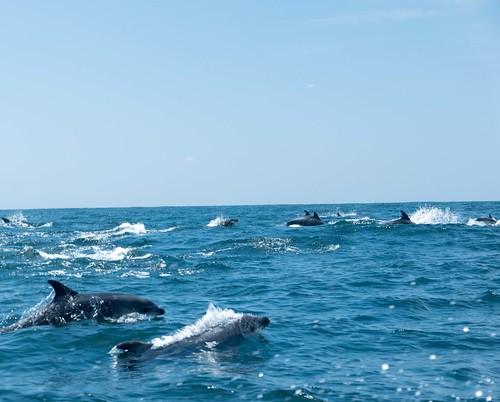
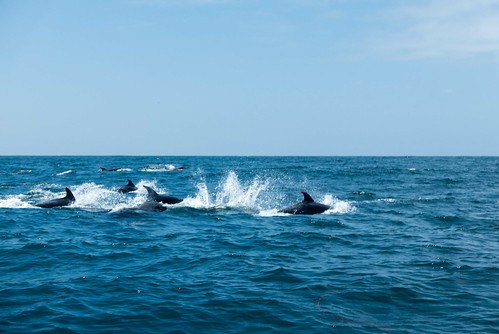
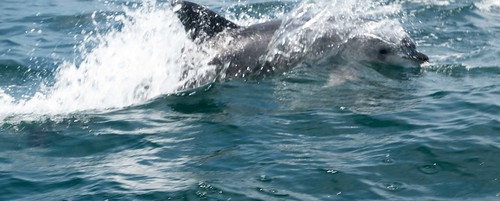
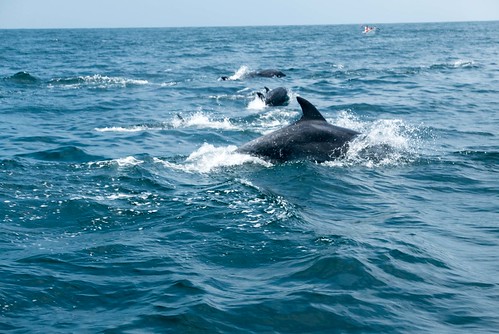

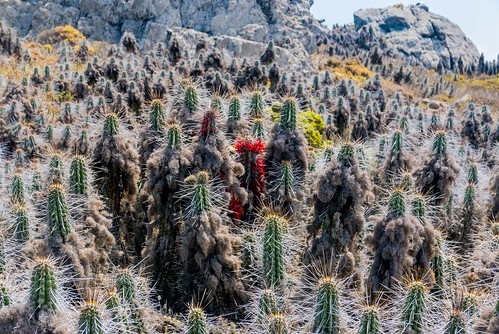
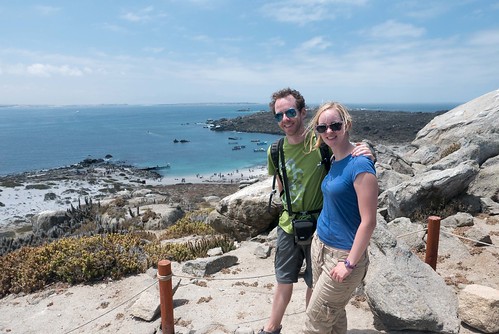
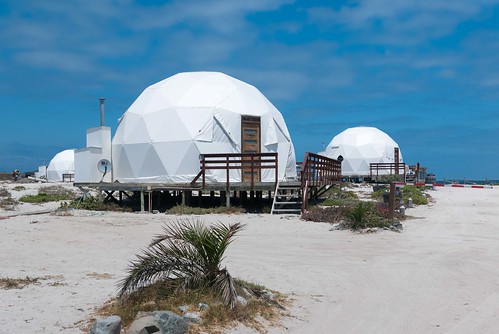
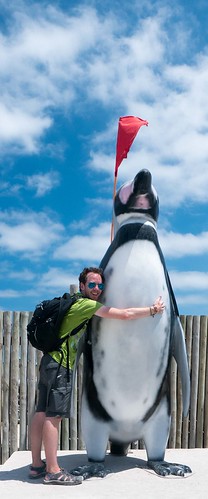
A disappointing dinner at
Pasta E Brazza (who forgets to put meat in pasta Bolognese?) led us back to the hostel where we arranged to do more self-touring the next day with Richard and Sara, this time to the Elqui Valley. The valley is home to lots of different distilleries and breweries, so in coordination with the excellent Cosmo Elqui staff, I planned a route for us all. After first heading to the bus station to secure onward travel for us and the other guys, we took a taxi to a random car park on Avenida Brazil, which for some reason was the main pick up point for travel to the valley. First stop was Guayacán brewery in Diaguitas, although we realised during the 1.5km trek from the highway into the village that we'd not accounted for it being a Sunday and so there was a risk it would be closed. Fate smiled on our sweaty selves though, and we arrived at a sunny courtyard to sample four different beers before the owner arrived to give us a tour in English. The brewery started off as a couple of guys making beer in their back yard in 2009; now they're making 20,000 litres a month purely from solar energy, and exporting 70% of it to Santiago. Not bad going for six years' work! It was really good too, and we needed two pitchers to wash down the excellent burgers they served. The village itself is tiny and very parochial, but quite colourful.

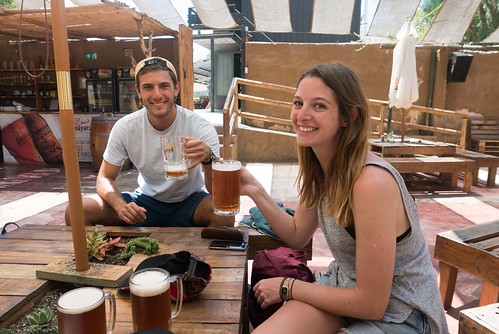
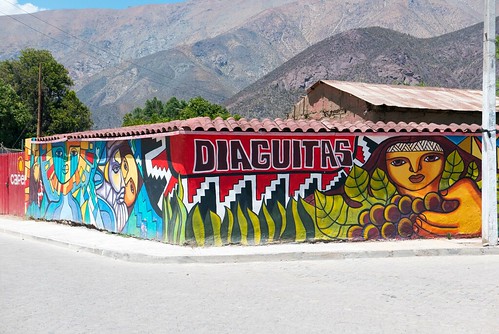
Midday came and went, so it was on to our next stop: Cavas del Valle, a small bodega in the middle of nowhere. A miscommunication meant that the colectivo we eventually flagged down drove straight past it, resulting in another walk in the baking heat back down the road. Unlike Santiago, the heat here is constant from midday onwards, so a lack of shade can cause issues of you're not prepared. Staggering into the vineyard, we got to try four wines for free courtesy of a lady who could clearly speak English but preferred not to. We understood most of it though, and out of the two reds and two dessert whites we tried, the Syrah stood head and shoulders above the others, so much so that I bought a bottle for us all to share.
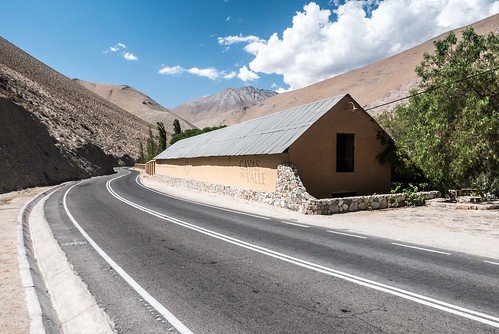
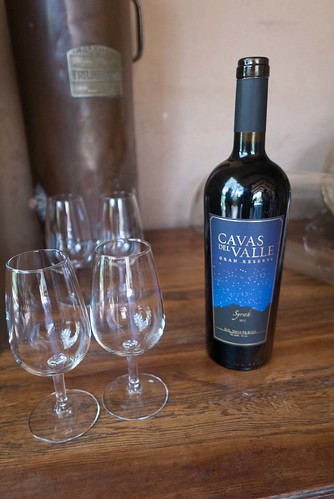
Our final destination was Pisco Elqui, a small town in the centre of the valley which attracts the kind of tourist who wants to kick back from the main hustle and just enjoy the views and the atmosphere. It was uncertain if we'd have a room when we arrived as we'd had to change our plans; we were originally going to stay in Vicuña but Felipe rightly pointed out that this would have been miles away from where we wanted to be the following day, and we'd need to go through Pisco Elqui anyway. So we turned up at Hostal Triskel hoping to find a room for four people and were in luck when the owner turned up half an hour later with a key for us. A walk into town saw us pick up ice cream at a market followed by pisco sours at El Durmiante Elquino, which filled us up plenty (we were still digesting the massive burgers from lunch).
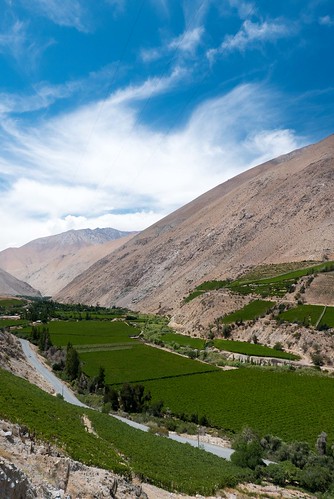
Back in the hostel garden, the four of us swapped card games and drank the excellent wine from earlier: we taught Sara and Richard cribbage and crash, while they showed us a different type of whist which was more fun than the version we were familiar with. The highlight was switching off the outdoor lights to look at the stars, and seeing more constellations than we've ever laid eyes on in the UK, as well as watching a satellite pass overhead. The couple pointed out all the galaxies and constellations they'd learned on their San Pedro observatory tour, which made us very excited to visit there in the coming days.
A decent and quiet night's sleep saw us raring to go the next morning. After a good breakfast of fresh bread, tea and yoghurt, we played with the resident cat Maga and her super cute litter of four kittens before walking to the central plaza to try and get a taxi to Fundo Los Pinchos, a pisquera which allegedly produced some of the best pisco in the world. Their main rival is Mistral, a more corporate venture located just off the plaza who appear to be used by every restaurant in town. It turns out that Pisco Elqui is not a place for taxis. We waited for fifteen minutes to no avail, only to be told in no uncertain terms by a local that taxis aren't something the town needs; makes sense given the size of the place. However, an enterprising guy in the market was willing to take us the 6km up the road for a mere twenty quid(!), which Sara with her much better Spanish managed to get down to fifteen. We'd have walked if the sun hadn't been so devastating, and after seeing the trail along the road with zero shade and lots of hills, I think we made the right choice. As to the pisqueria itself, well, it was certainly a good exercise in listening to Spanish. The tour took almost an hour and was undoubtedly entertaining and fascinating if you were a local, with its takes of hauntings and some photos passed around that may or may not have been photoshopped, but by the end I just wanted to taste the pisco and get out. My wish was soon granted with 35, 40 and 45 percent shots handed around, followed by a sweeter nectar version which we pretty much all preferred. If anything, I've learned that pisco is much nicer in a pisco sour.
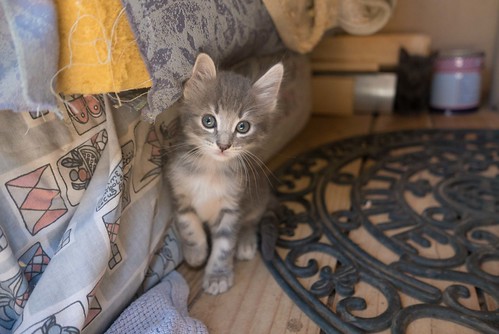
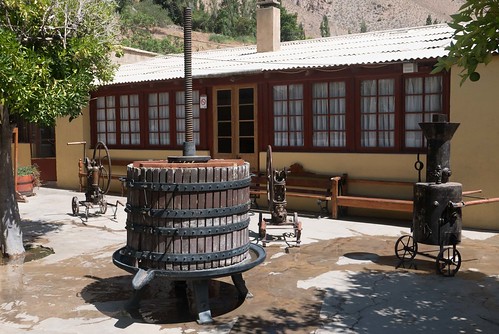
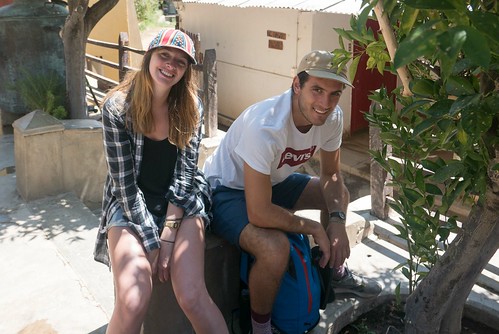

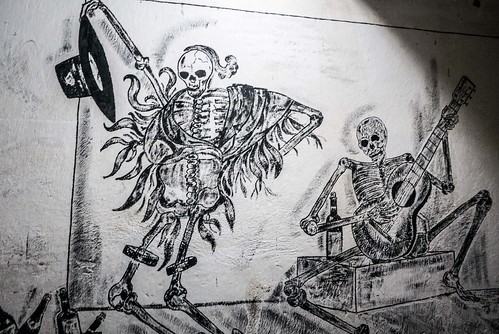
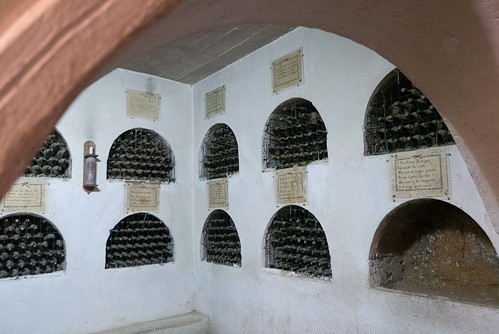
Out of the three places we visited, I think we all preferred the brewery - which no-one was expecting - but it was a great trip out to a lovely part of Chile and one that is worth doing (and staying over). A lunch at the Mistral distillery was pretty much our only option since Monday seems to be a holiday for many restaurants at lunchtime, but my chicken assado was nice enough and tided us over for our bus back.
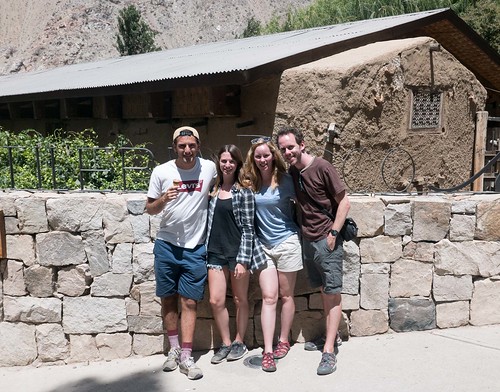
We collected our big backpacks which Cosmo Elqui had kindly let us leave, before hitting the supermarket, saying farewell to Sara and Richard, and getting on an overnight bus to Iquique. We'd not been able to get a cama or even cama ejecutivo, so were stuck with the partially reclining semi-cama which we'd been told wasn't as bad as we might think. The bus turned up an hour late, but Sara and Richard were right: we managed to get a fairly decent sleep and arrived in Iquique at around 8 the next morning.
